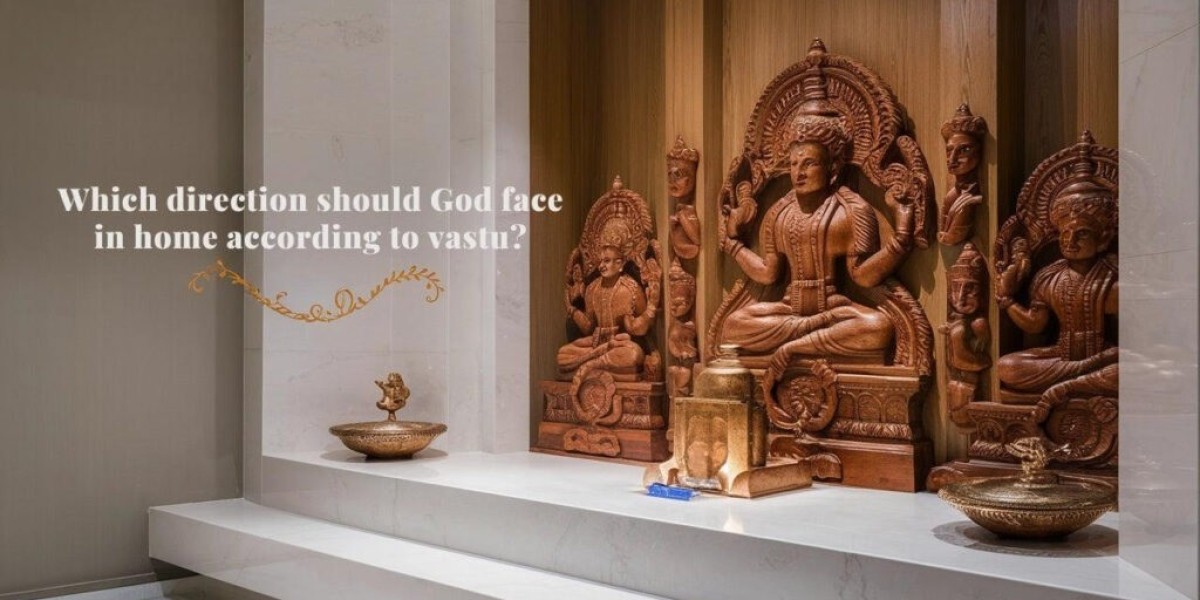Introduction
The placement of a pooja room or a sacred space in your home is more than just a traditional practice — it’s a spiritual necessity for millions of Indian households. The principles of Vastu Shastra serve as a guiding light for creating positive energy within this sacred space. If you are wondering which direction should God face in home as per Vastu, this comprehensive guide by Housiey offers all the insights you need to align your divine setup with age-old wisdom for a peaceful, prosperous home.
The Significance of Vastu in Modern Homes
Vastu Shastra, the ancient Indian science of architecture, helps harmonize energies in living spaces. Whether it's your main hall, bedroom, or the pooja room, Vastu ensures that each zone of your home is aligned with cosmic energies. When it comes to your sacred space, direction and positioning play a vital role in channeling positivity, prosperity, and spiritual wellness.
Why Direction Matters for God’s Placement
In Vastu, each direction has a ruling deity and associated element. These energies influence your mental state, spiritual growth, and even health. That’s why placing deities facing the correct direction is not symbolic — it has real energetic consequences.
Ideal Direction for Placing God in Home
East — The Direction of Sunrise and Positivity
As per Vastu, the ideal direction for placing idols or pictures of God is the East, especially the northeast corner of the home. The East is governed by Indra, the king of gods, symbolizing growth and clarity. Placing your pooja room or temple facing east brings sunlight, purity, and renewed energy into your daily rituals.
North — The Direction of Wealth and Serenity
The North direction, ruled by Kubera, the god of wealth, is also considered highly auspicious for the pooja room. If space constraints prevent you from choosing East, the North direction is your next best option. This placement invites prosperity, stability, and calmness into the household.
Which Way Should God Face?
For the Idol or Picture of God
According to Vastu, idols or images of God should face West, so that the devotee faces East while praying. This alignment allows the devotee to absorb maximum positive energy from the East during prayer rituals.
Deity-Specific Directions
Lord Shiva: North or Northeast
Lord Ganesha: East or West
Goddess Durga: Northeast
Lord Vishnu: West
Goddess Lakshmi: Facing West is preferable
Sun God: East only
Hanumanji: South (unique exception as He protects from negative energy)
These placements are not only Vastu-friendly but also energetically aligned with each deity’s vibrational frequency.
Placement Rules for the Pooja Room
1. Northeast is Sacred
In Vastu, the Ishanya or northeast corner is the most divine and peaceful direction. This area should be reserved for spiritual practices like meditation and prayer. It receives optimal morning sunlight, which purifies the surroundings.
2. Never Under a Staircase
Placing a temple or God idols under a staircase is strictly prohibited. The area under the stairs holds compressed energy and movement above can disturb the sanctity of the space.
3. Avoid Bathrooms Near the Temple
Bathrooms are zones of negativity and impurity in Vastu. Placing the temple near or adjacent to a bathroom wall can disrupt the flow of positive vibrations and should be avoided.
4. Always Elevated
The temple or pooja setup should always be placed on a platform or pedestal, never directly on the floor. This elevation denotes respect and separates the divine from the mundane.
Do’s and Don’ts for Pooja Room According to Vastu
Do’s
Use light or pastel colors for the pooja room.
Ensure the room is clutter-free and well-ventilated.
Use copper or brass items over plastic or iron.
Clean the temple daily and light a diya in the morning and evening.
Keep the pooja room separate from the kitchen and bedroom.
Don’ts
Avoid broken or chipped idols.
Never keep more than one idol of the same deity.
Do not place photos of the deceased in the pooja room.
Avoid using dark or black colors.
Do not place shoes or dustbins near the temple area.
Materials and Design As Per Vastu
Temple Materials
Opt for wood or marble for temple construction. Wooden temples radiate warmth and purity, while marble is a symbol of serenity. Avoid glass or metal structures which are less grounded energetically.
Design Tips
Use a dome or gopura-style top for a traditional look.
Include small drawers for storing incense, lamps, and other pooja materials.
Place a bell on the right-hand side of the entrance if possible.
Install soft yellow lighting for a divine ambiance.
Lighting and Aura
Lighting plays a critical role in elevating the divine experience. Natural light during the day and oil lamps or diyas in the evening create a sanctified and energized atmosphere. Avoid using harsh or red lights. Gentle, white or warm yellow LED lights enhance spiritual focus.
Importance of Daily Rituals
Daily rituals serve to rejuvenate not just the space, but also your inner energy. When God is placed in the right direction, these rituals become more effective. Reciting mantras, lighting incense, and offering fresh flowers are traditional practices that become even more powerful with correct spatial alignment.
Common Mistakes to Avoid
Placing idols facing each other
Having idols touching the wall
Making the pooja room in the bedroom
Using artificial flowers for decoration
Cluttering the temple with unused items
Impact of Vastu-Compliant God Placement
When the placement of God in your home aligns with Vastu, it brings about:
Improved family harmony
Enhanced focus and clarity
Prosperity and abundance
Protection from negative energies
Stronger spiritual connection
Homes that follow these Vastu rules often report a noticeable improvement in mental peace and general wellbeing.
10 FAQs: One-Line Answers
Which direction should idols face in pooja room?
West direction is ideal so the devotee faces East.Can we place God in the south direction?
It is generally avoided except for Hanumanji.Is it okay to have a pooja room in the kitchen?
Not ideal; separate space is preferred.Can pooja room be in the bedroom?
Best to avoid, but if necessary, use curtains to separate.Which material is best for a home temple?
Wood and marble are highly recommended.Can broken idols be kept in the temple?
No, they should be respectfully discarded.Which direction should a diya face?
Diya should face East for best energy.Should the pooja room have doors?
Yes, preferably double doors made of wood.Can we place photos of ancestors in the temple?
No, it disrupts spiritual energies.Which colors are best for a pooja room?
White, yellow, or pastel shades work best.
Conclusion
A home is not just a structure of bricks and walls, but a reservoir of energy. And when this energy is fine-tuned with Vastu principles, especially in the pooja room, the effect is transformative. By knowing which direction should God face in home as per Vastu, you not only honor ancient traditions but also create a harmonious environment that nurtures peace, positivity, and prosperity. The East and North directions, the positioning of idols, and the avoidance of common mistakes can significantly elevate your spiritual practice. With mindful choices in design, material, and rituals, you invite divine blessings into your living space. Aligning your home with Vastu is not just about where you place the divine — it’s about how you invite the divine into your daily life.
For more insights and updates on ideal Vastu practices and home planning, explore this link today and bring your home's spiritual energy into perfect alignment.








